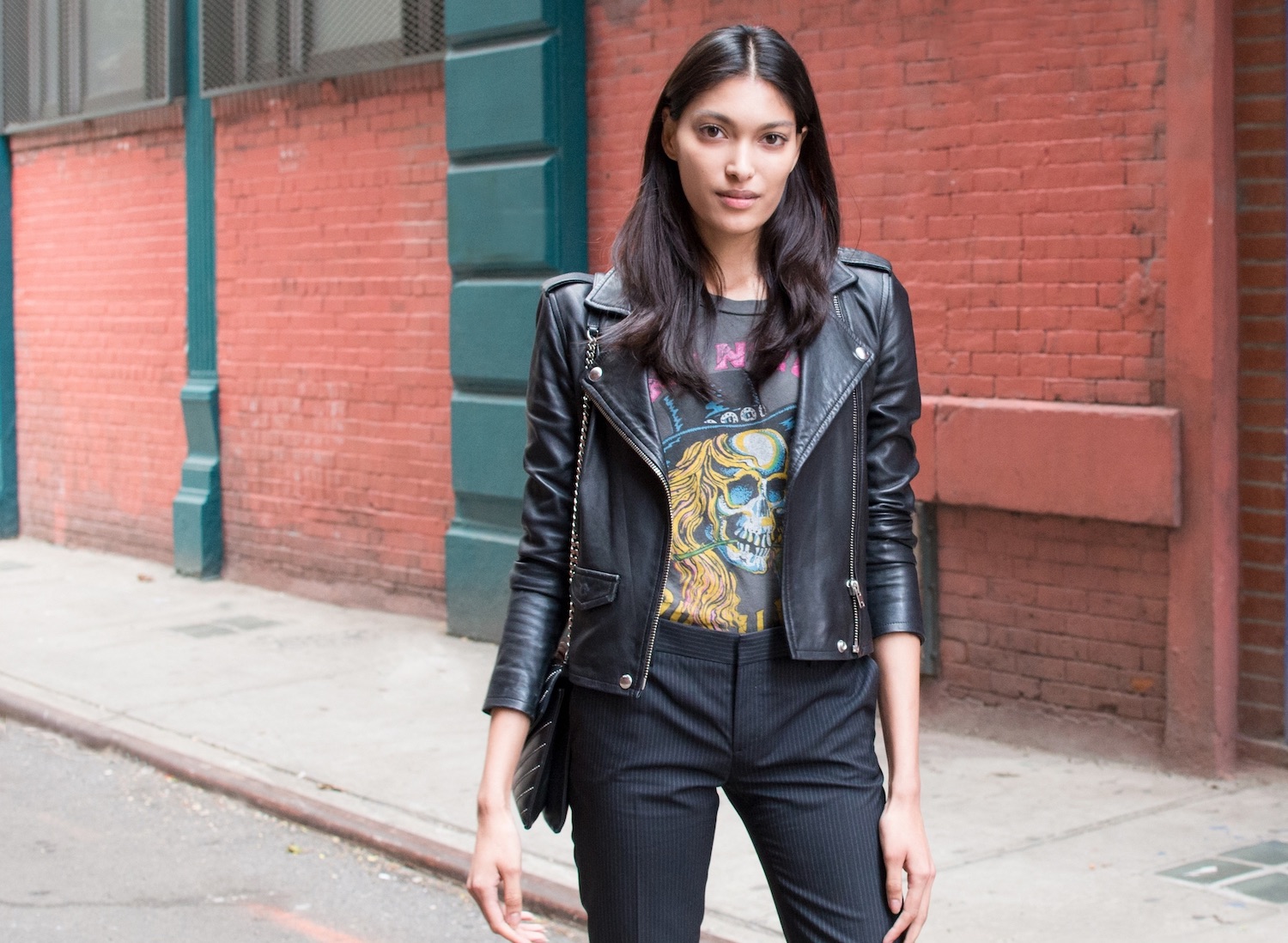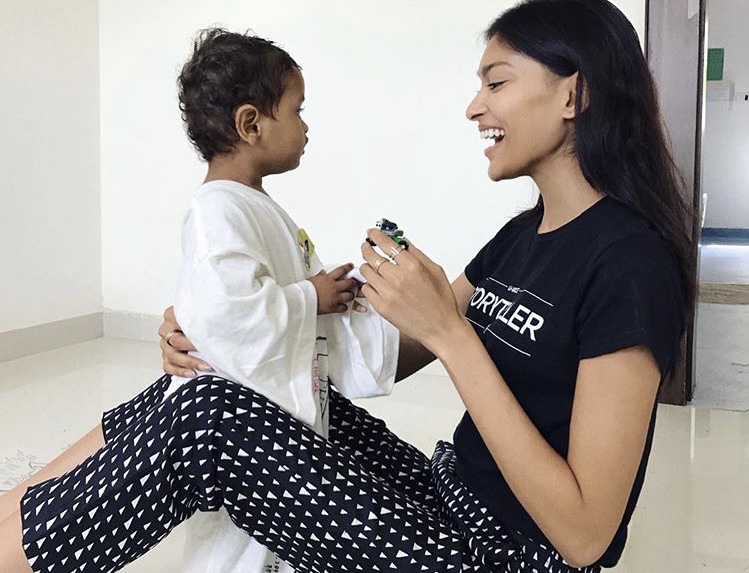
Model Pritika Swarup Talks Operation Smile and Launching Her Own Investment Fund
January 17, 2019
Rana Good is the founder of Naïra NYC. A writer for publications such as Forbes, Travel + Leisure, Coveteur, Mens Journal and others, she created her own platform celebrating women of color.
As a model, Pritika Swarup has graced the pages of Vogue India, Harper’s Bazaar Arabia, and Elle South Africa but off-duty her passion is far from the fashion world and focuses on giving back. An ambassador for Operation Smile, she’s worked on missions in India connecting with patients and helping the organization with their lip and cleft palate operations. There she’s witnessed firsthand how one surgery can completely turn around a person’s life. I met up with Swarup in between her travels shooting for brands around the world, studies (she’s also studying business at Columbia) and charity work to discuss her thoughts on the modeling industry and memories she’s created volunteering.
How did you get your start as a model?
Pritika Swarup: I was scouted by my current agent Daryl at Disneyworld. I was there with my parents and we noticed this guy was following us. He even came into this café with us and we were like “who is this creep?” He eventually came up to talk to us, telling us he’s a manager and represents models. Coming from Virginia my family wasn’t really used to the entertainment industry, so my parents were hesitant when he talked about acting and modeling. However, they were really supportive and soon after I moved to New York. There I finished high school while developing my career as a model.
What have been some of the most memorable projects you’ve worked on?
One of my absolute favorite shoots was for the tenth-anniversary issue of Vogue India. They flew in this photographer, Kristian Schuller to shoot it and he’s known for his avant-garde sets. In one shot I was hanging off a ladder like a dead doll and in another shot, I had a million flowers around me. It really pushed me to get out of my comfort zone. I was working with two or three other models and we had great energy together. I spent a total of three months in India and was working nonstop while I was there. I don’t think I had a day off. The industry is a lot smaller there so I ended up working with a bunch of publications such as Vogue, Elle, and Cosmopolitan.

What are some positive and negative things you’ve seen in the industry?
Rejection is something people think is negative but I actually think over time it can become a positive. When you’ve been rejected you can start thinking, what could I have done better? How can I approach this a different way? It’s obviously not the best feeling to get rejected but in this industry, you get rejected a million times. Through rejection, I’ve come out feeling more confident, efficient and stronger.
A negative for me is that everyone pigeonholes models in this industry. If you have a certain ethnicity or size you’ll become categorized. I don’t like that because I think we exist in so many different dimension and aspirations. You’ll go to a casting and they’ll be like this girl is too dark, too short, too something. I think we should be focusing more on character than those aspects.
Do you think the industry is becoming more diverse?
It depends on what market you’re talking about, I do think so in the U.S. People are becoming more open to different ethnicities and sizes. However, you also have a lot of tokenism in which you’re selected just to tick a box. They’re like okay I have one Indian girl now. I think there should be a more complete representation. I go on a lot of shoots where I’m the one ethnic girl and I don’t think that represents diversity.
How long have you been working with Operation Smile? What do you with them?
They were founded in my hometown in Virginia and I’ve been working with them since middle school. I started volunteering with them in their old headquarters, sorting mail and fundraising. When I moved to New York I got disconnected from the organization because I was working a lot as a model but then I traveled to India for work and saw so many children with cleft palate. When I got back to New York I gave them a call not sure if they would remember me, but they did! I told them about my career and they recommended that I become an ambassador to do press, missions, and events. I went on a mission to India which was such a life-changing experience because I had a chance to see kids before and after surgery. They lived in a tough environment often lacking clean water or shoes and were so thrilled to be with the team. Since I’ve worked with them the organization has grown so much and no longer just focuses on lip and palate surgery but overall surgery. I believe everyone should have healthcare as a basic right.

Who are some of the children that left a lasting impression on you?
There were three – Peeyaj, Yechna and Pranjul. Peeyaj was a six-month-old baby who had to travel three hours to get to the site. On the way there they got into an accident and his father was severely injured but his mother still took him to us. Then when we saw him we realized we couldn’t give him surgery because he was underweight and had a low hemoglobin count. His mom was so determined for him to have this surgery and had gone through so many obstacles, she wouldn’t take no for an answer. In the end, he did get surgery because his mother was so confident that he would be fine and that it would change his life for the better. He had a bilateral cleft surgery which was successful, they still send me pictures now!
Yechna was another patient I met and fell in love with. She was four years old and had previously had three unsuccessful surgeries, and her family struggled to decide whether she should have another, concerned that she would be experiencing more pain. Her energy lit up a room and she gave the best hugs! Her parents decided to come to us because they were convinced that Operation Smile could do the job. After the surgery, she was so confident and outspoken which was so nice for me to see. I started crying when she left.
Pranjul was the national champion of India in rowball which is basketball on rollerblades and he was there for a third surgery, having had two unsuccessful ones before. I just loved him because he was so driven and had all these goals — he didn’t want his mouth to be his weakness, he wanted it to be his strength. Through his sport he broke through so many barriers, initially they didn’t want him to participate in any team sports because he was smaller and they thought he could get hurt. However, that’s what would help him at rowball he could slither like a snake through groups to make his shots. His story is very inspiring – he didn’t let anything stand in his way.
We has such a diverse group of patients and those are the children that stood out to me. A lot of them were repairs and not primaries, meaning they were operations that had to be redone because they weren’t done well initially.
How can other people get involved with Project Smile?
There are many levels of involvement. You can donate a small amount of money once a month or you can raise awareness for the organization and post about it. There are also a lot of student missions to be involved on the ground, there you can volunteer or help with medical records. We hold multiple missions every month in various locations. You can start a club in your town or college, I am currently launching a club at Columbia right now.
What are you studying at Columbia and what do you hope to do with your degree?
I am studying financial economics as my major and my minor is psychology. I’ve been investing on my own for a while and decided that I wanted to be able to invest at a greater capacity and give other students the opportunity to do so as well. So I launched my own investment fund called Praetorian Management this past September. It’s a secondary market investment fund focusing on traditional large and mid cap equities in the U.S. Our portfolio is quantitively traded and executed through a program that we developed, which allows us to forecast the returns of our quant portfolio. We’ve recruited 25 Columbia undergrads with the aim to provide them with first-hand experience as an equity researcher and investment manager, and facilitate a student investment community that is both inclusive and innovative.
What are some of the best places you’ve traveled to in your career? What made them stand out?
London was the first place I’d ever traveled to alone and was the first market I worked in. I didn’t have my family around and really grew up when I was there. The city is so vibrant and has so much energy. It really challenged me to become an adult, interact with people internationally and adapt to different situations. The history and architecture were awesome — it was so mesmerizing to me.
I also traveled to Jaipur twice last year for work, the city is beautiful with tons of history and palaces. I also loved Bandipur. There were stayed next to a tiger reserve and did a photo shoot in the reserve which was so cool.
What are your favorite beauty and wellness tips?
My mother is into ayurvedic medicine and I got a lot of tips from her. Whether it’s aloe vera gel masks in the evening or using chickpea flour and yogurt on my face, her tips really make skin look great. I love SKII brightness masks, they really help me when I’m traveling as they replenish and hydrate my skin. I’ve been using La Mer for a while now, their soft cream is heaven. I try to drink as much water as I can every day. I also used coconut and sesame oil in my hair, I alternate between them. You can really see the difference and I’ve been doing that for years now, my mom really ingrained that tip in me. I also used Vitamin C extract, and mix that in with my moisturizer. It brightens and evens discoloration from the sun. That’s one of my secrets!